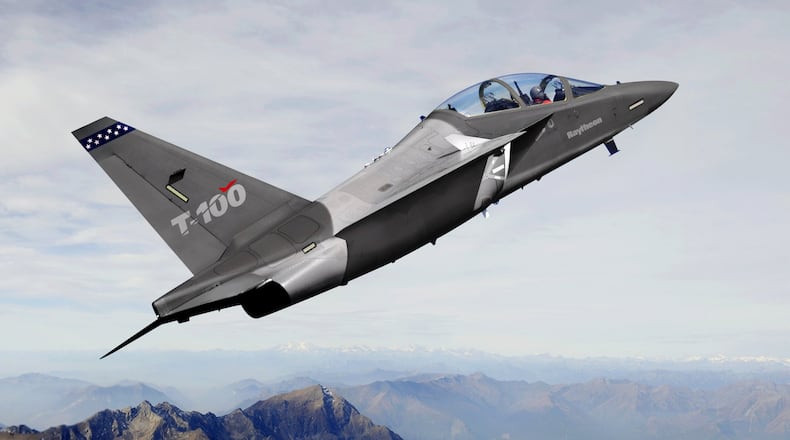“There are many, many folks in industry very, very interested in winning this award,” said Kevin W. Buckley, program executive officer for mobility programs at the Air Force Life Cycle Management Center.
The Air Force is expected to ask industry teams for proposals this week. The development of the T-X, as the replacement is called, is managed at Wright-Patterson.
“You really have this as the last military air frame selection this decade so people are putting a lot into this,” said Richard Aboulafia, a senior aviation analyst with the Virginia-based Teal Group.
The aircraft would train pilots preparing to fly the Air Force’s front-line combat jets. The Air Force envisions the newer trainer would be less expensive to maintain and fly than the T-38 and better equipped to train pilots for fifth-generation fighters, such as the F-22 Raptor and the F-35 Lightning II, Buckley said. The T-X jet trainer could join the ranks in 2024 with deliveries for another decade.
“We’ve got to better prepare our pilots by getting them a more modern aircraft,” he said.
Among potential competitors, the teams were likely to be: a Boeing partnership with Swedish-based Saab on a newly designed single-engine, twin-tailed trainer jet that flew this month for the first time; and Northrop Grumman Corp., offering a new design in partnership with BAE Systems and L-3.
Other competing teams rely on existing and proven designs: Lockheed Martin and Korean Aerospace Industries would produce the T-50A; and Raytheon Co. and Italy’s Leonardo-Finmeccanica have teamed up on the T-100.
Sierra Nevada Corp. and Turkish Aerospace Industries also may offer an entry, according to Aviation Week & Space Technology.
First flown in 1959, the T-38 has had multiple updates to extend the jets’s lifespan. The Air Force bought more than 1,100 of the aircraft, the last of which was delivered in 1972. The Air Education and Training Command has about 430 remaining in the fleet, Buckley said.
“These are some pretty old aircraft,” he said.
As the schedule for T-X slipped in prior years because of budget constraints, the Air Force scheduled more refurbishments to keep the old planes flying longer, Buckley said.
Loren B. Thompson, a Virginia-based senior defense analyst and defense industry consultant, said the Air Force “desperately” needs a new trainer.
“The existing T-38 trainer is worn out, and may soon be unsafe to fly,” Thompson said in an email. “So I think the T-X replacement will go forward, although the Air Force will definitely be looking for a good deal.”
The plane will compete for funds against high-ticket planes the Air Force has targeted as top acquisition priorities: the KC-46 Pegasus aerial refueling tanker, the F-35A, and the next generation B-21 Raider stealth bomber under development, Thompson noted.
“But those planes won’t be much use if we don’t have a modern trainer to prepare their pilots for combat,” he said.
In the race to replace the T-38, some U.S. firms partnered with foreign-based companies that have jet trainers flying in other countries to cut development risks and because the military wants proven designs, Aboulafia said.
“One issue is not just that U.S. contractors have gotten more risk averse and less willing to use their own money. It’s also that the services expect a greater level of maturity” in an aircraft, he said.
“I think that tells you a lot about the changing nature of defense contracting,” he said. “It’s less about the industrial base and more about value for money and risk reduction.”
But it’s not without precedent, he said, noting past U.S. deals that partnered American companies with foreign partners, such as the U.S. and British collaboration on the Marine Corps AV-8B Harrier, among other examples.
The U.S.-produced Lockheed Martin F-35, the most expensive weapons program in history at $379 billion, has partnered with foreign allies in the development of the stealth fighter, also.
About the Author
